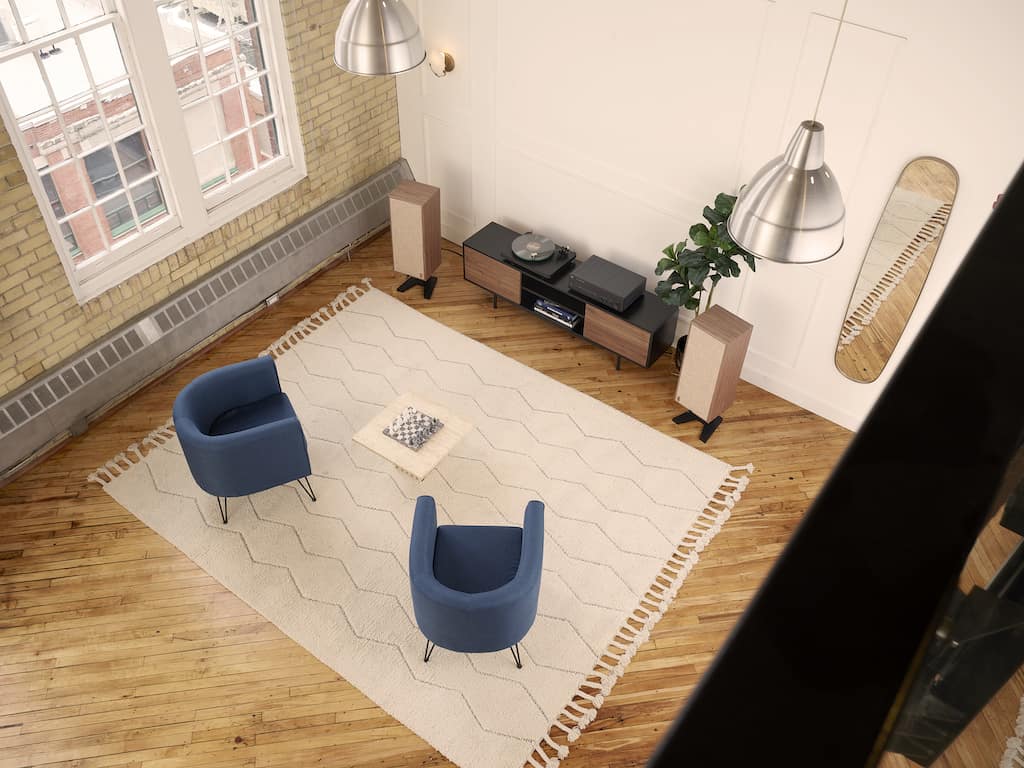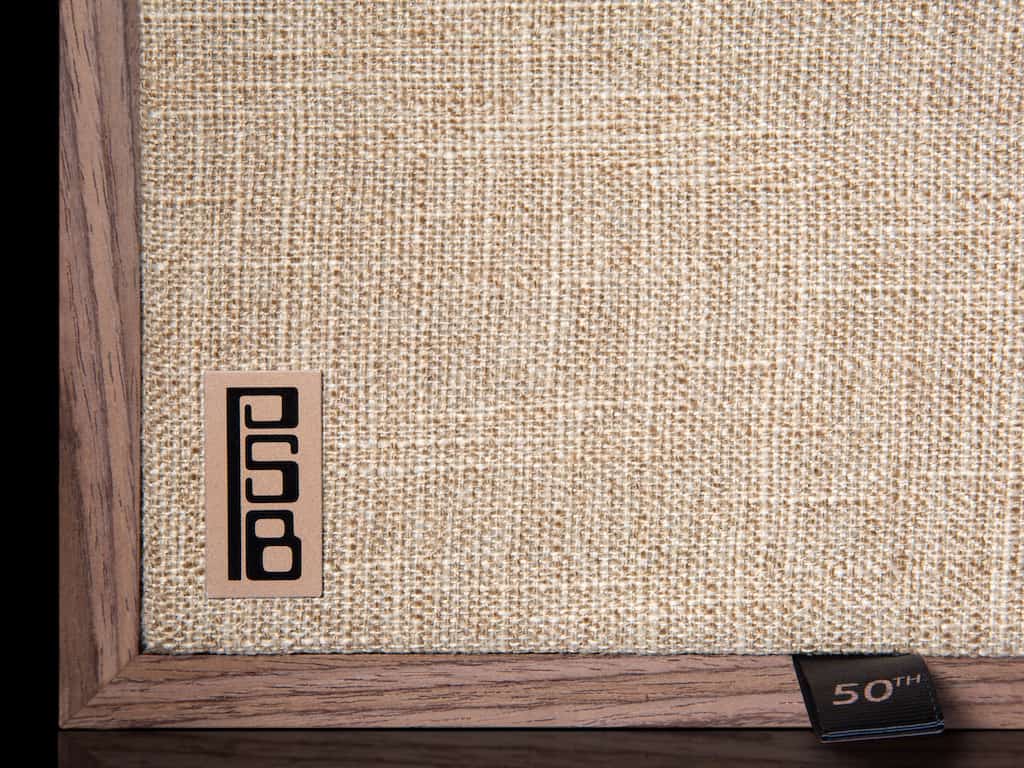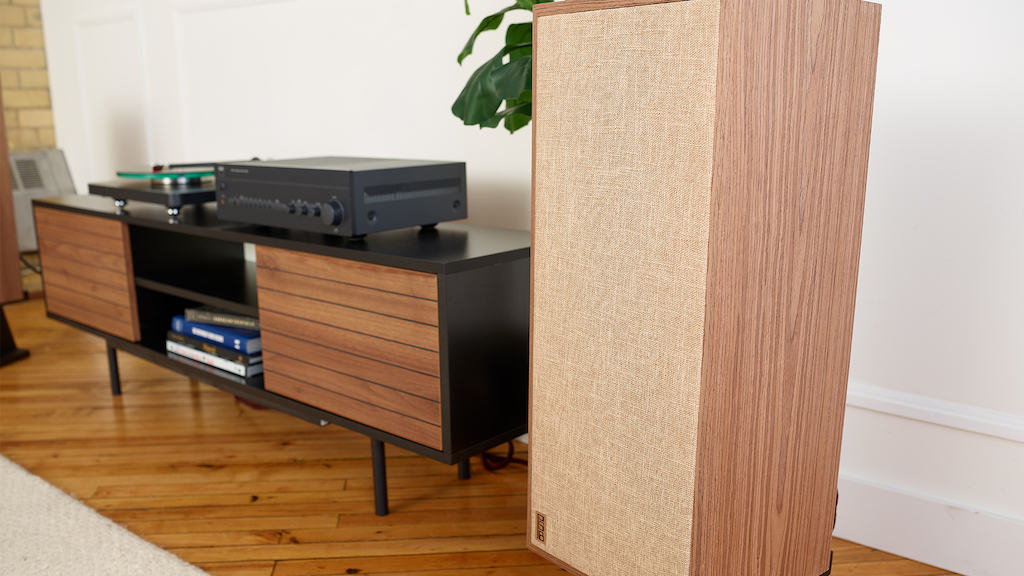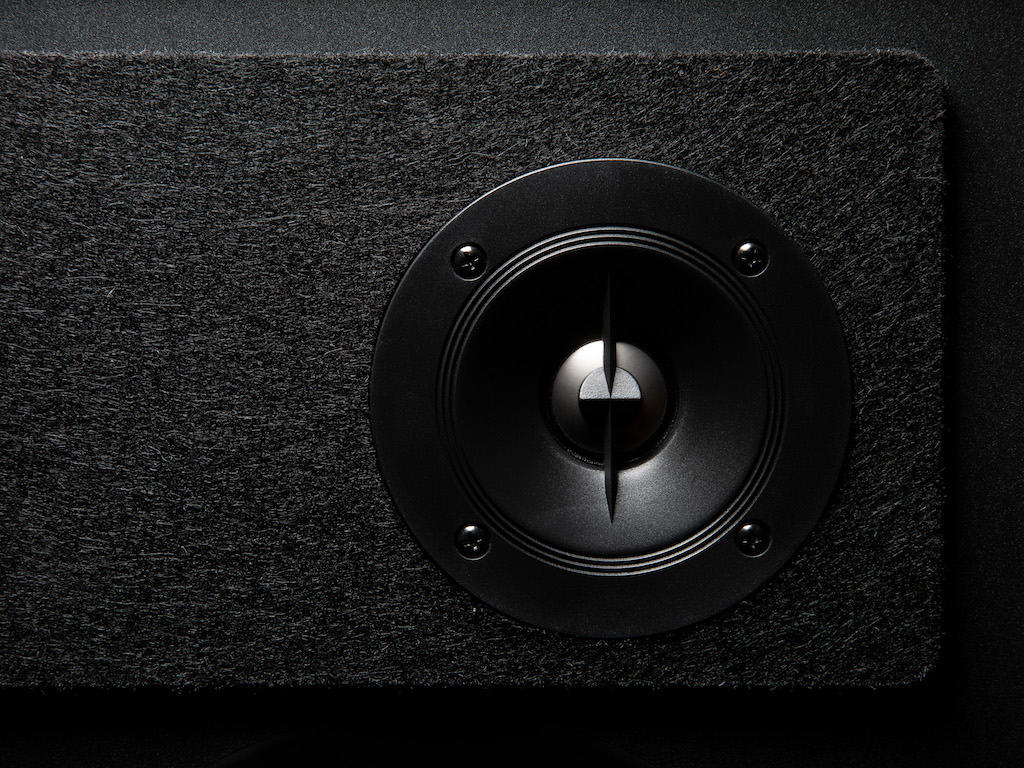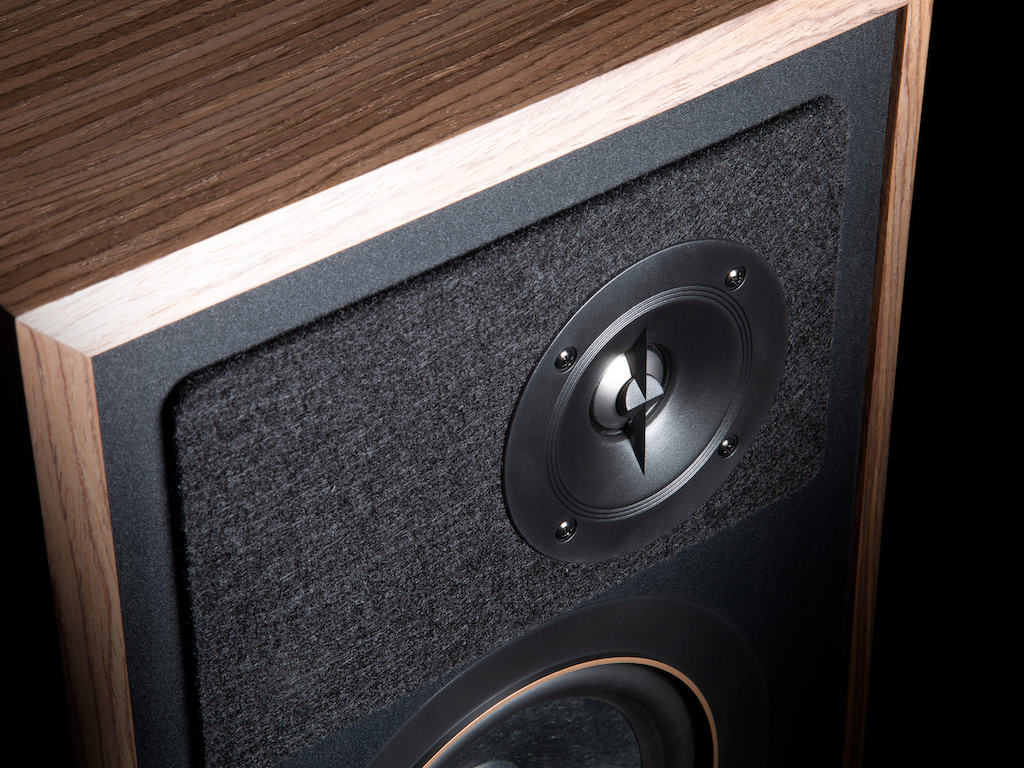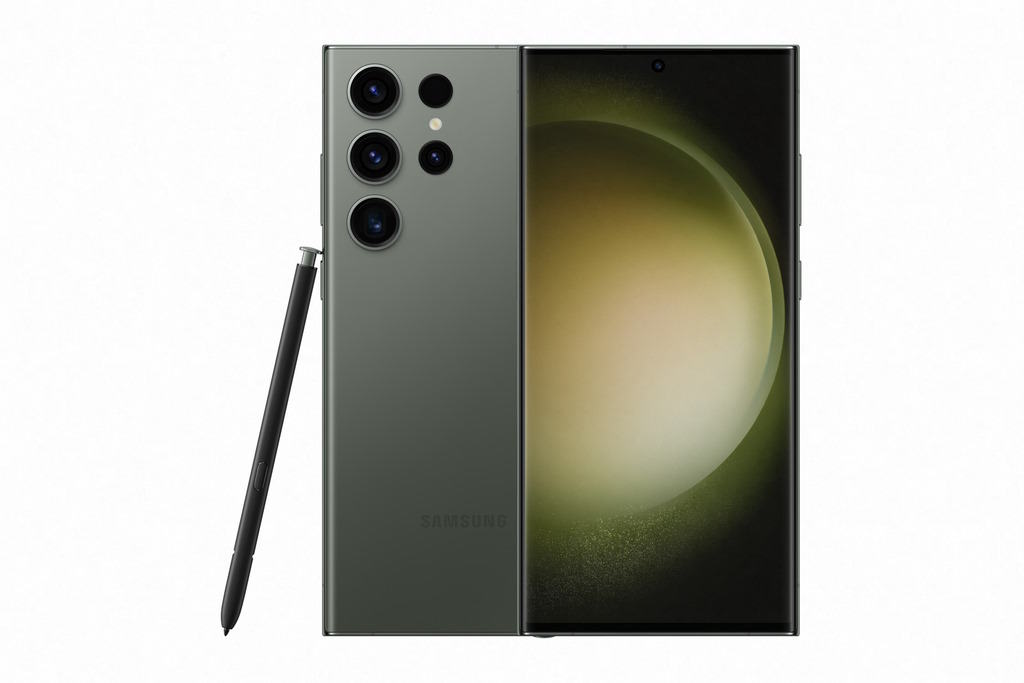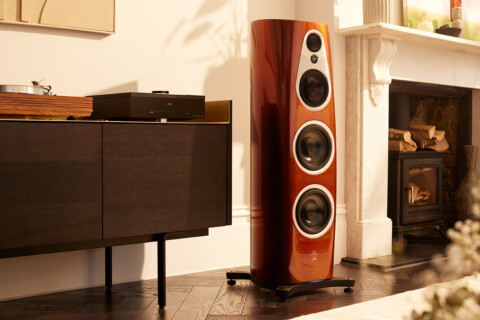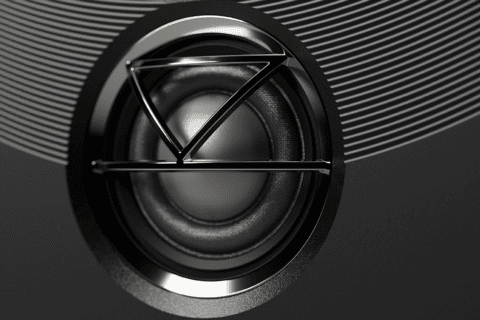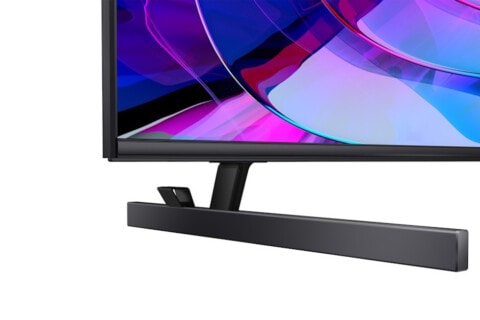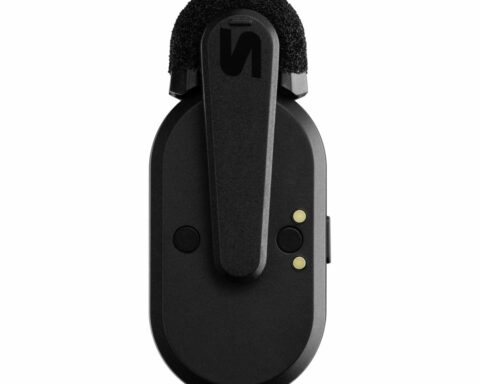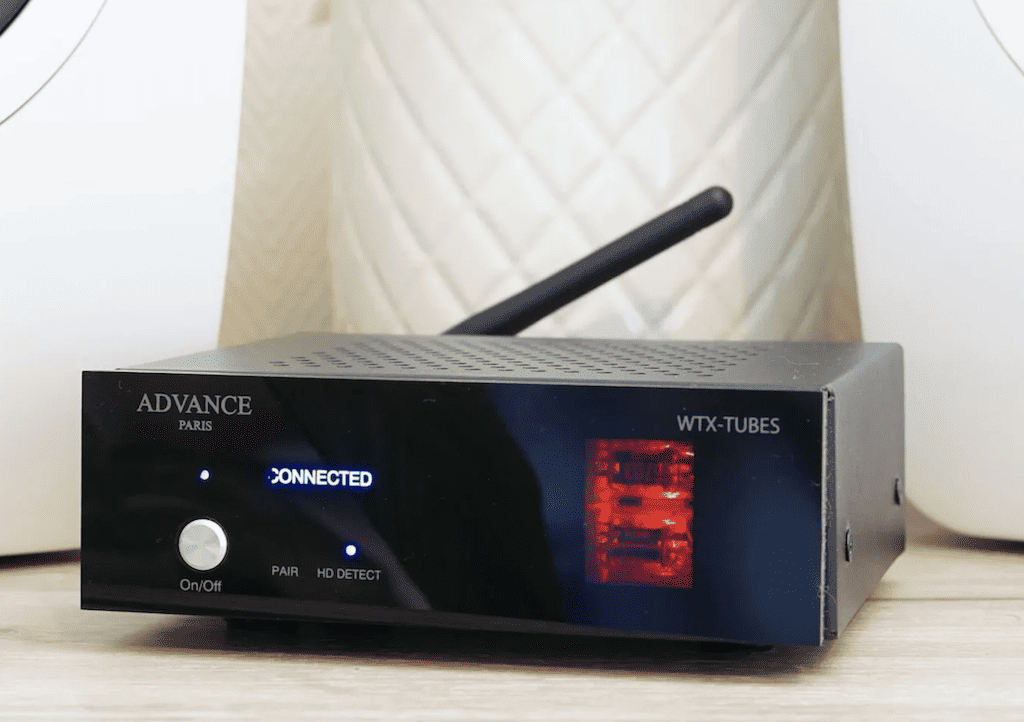Summary
PSB Passif 50 Loudspeaker REVIEW
PSB’s retro-look Passif 50 speakers get ANDY BAKER’s undivided listening attention and he likes them very, very much.
$4995
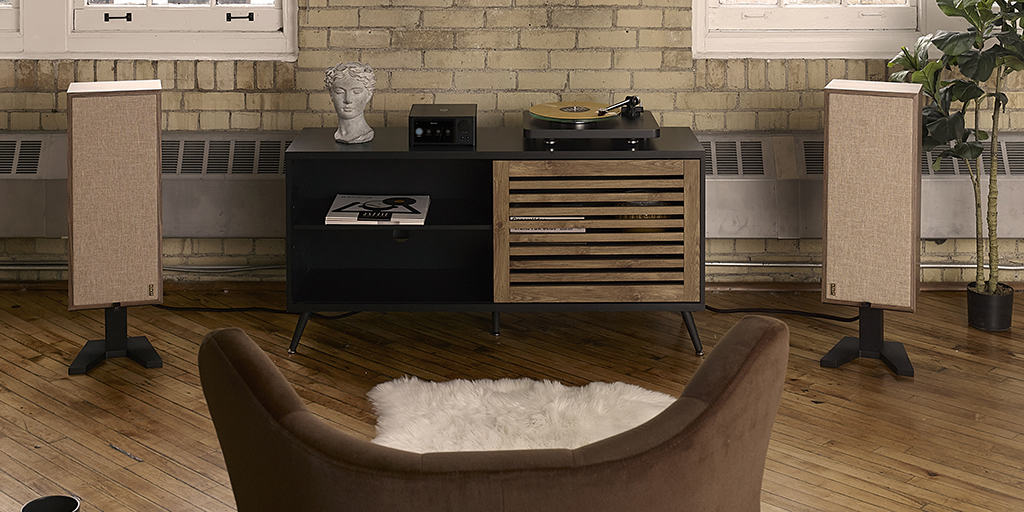 Modern speakers come in all different shapes and sizes – teardrop, wedge, sphere, rectangle, triangle – each one of them having its merits. But for some audio enthusiasts, the classic look of the simple wood-veneered rectangular box with fabric grill cover will never lose its appeal.
Modern speakers come in all different shapes and sizes – teardrop, wedge, sphere, rectangle, triangle – each one of them having its merits. But for some audio enthusiasts, the classic look of the simple wood-veneered rectangular box with fabric grill cover will never lose its appeal.
Harbeth, Tannoy, Klipsch and Spendor to name a few have tended to stick to this tried-and-true shape with at least some of their model lines, and companies like Mission, Wharfedale, JBL and now PSB are bringing back examples of their popular models from the 1970s. That is to say, they may look like throwbacks to their 1970s counterparts, but they are designed and constructed using thoroughly modern components and technology.
Would you like to support our mission to bring intelligence, insight and great writing to entertainment journalism? Help to pay for the coffee that keeps our brains working and fingers typing just for you. Witchdoctor, entertainment for grownups. Riveting writing on music, tech, hi-fi, music, film, TV and other cool stuff. Your one-off (or monthly) $5 or $10 donation will support Witchdoctor.co.nz. and help us keep producing quality content. It’s really easy to donate, just click the ‘Become a supporter’ button below.
A trained violinist, Paul Barton created the company PSB (Paul and Sue Barton – Sue being his wife) in 1972 in Ontario, Canada, after years of building and experimenting with DIY speakers in his father’s garage and selling kitsets of his own creation to fellow students at University. The Passif I was one of his first creations to go on the market, hand-built and tuned by ear, with the Passif II coming soon after. A couple years in, Paul befriended Dr Floyd Toole, a psychoacoustical researcher at the National Research Council of Canada, subsequently gaining access to an anechoic chamber where PSB speakers have been tuned – at least in development – ever since.
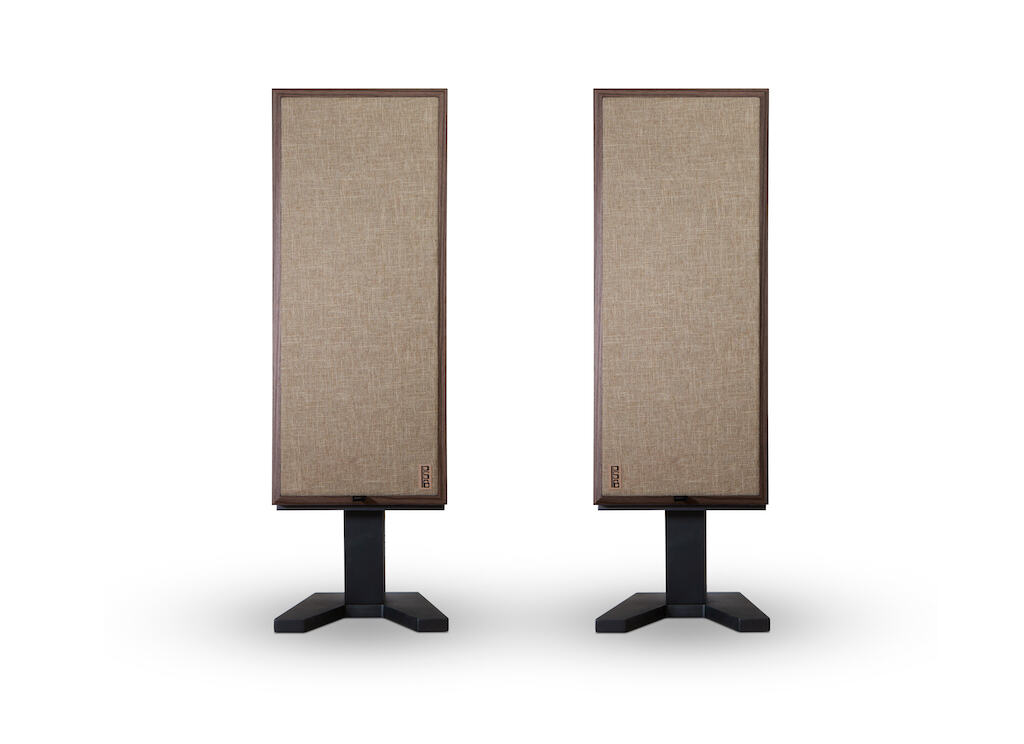
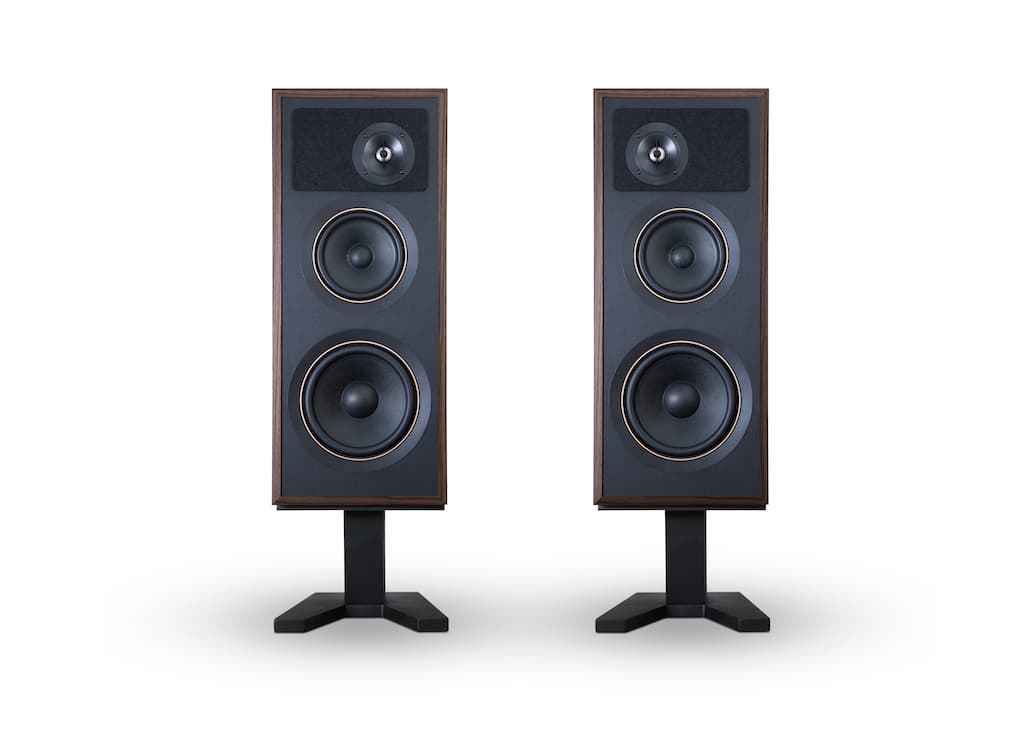 Some fifty-odd years later, PSB is owned by Lenbrook International, also home to NAD and Bluesound, though Paul is Chief Acoustics Designer and still designs his own speakers. Although PSB speakers – the Passif 50 included – are now designed and tuned using computer simulation technology, fine-tuning is done by ear to ensure timbral accuracy and overall musical enjoyment.
Some fifty-odd years later, PSB is owned by Lenbrook International, also home to NAD and Bluesound, though Paul is Chief Acoustics Designer and still designs his own speakers. Although PSB speakers – the Passif 50 included – are now designed and tuned using computer simulation technology, fine-tuning is done by ear to ensure timbral accuracy and overall musical enjoyment.
Build and Features
A tribute to Paul’s earliest Passif creations, the 2-way Passif 50 speakers, assembled in China, are the epitome of 1970s style. From the classic rectangular box beautifully finished with open-grain Walnut veneer to the cream/brown/beige textured woven-cloth covers and the little black wood stands (speaker dimensions being 66cm x 28cm x 25.4cm, h x w x d, these are technically a standmount) they really do shout “retro”. In terms of function, however, we get a thoroughly modern speaker with trickle-down technology from PSB’s flagship range.
The Passif 50s come in matched pairs with mirrored wood grain cabinets and are intended to be placed with the off-centre tweeters on the inside. The tweeters themselves are 1-inch titanium domes, each with a neodymium magnet and ferrofluid damping, featuring a phase plug for increased sound dispersion. You’ll notice the tweeters have a rectangular felt surround which is in place to help minimise edge diffraction – that is, when sound from the tweeter diffracts off the edges of the cabinet and causes frequency distortion.
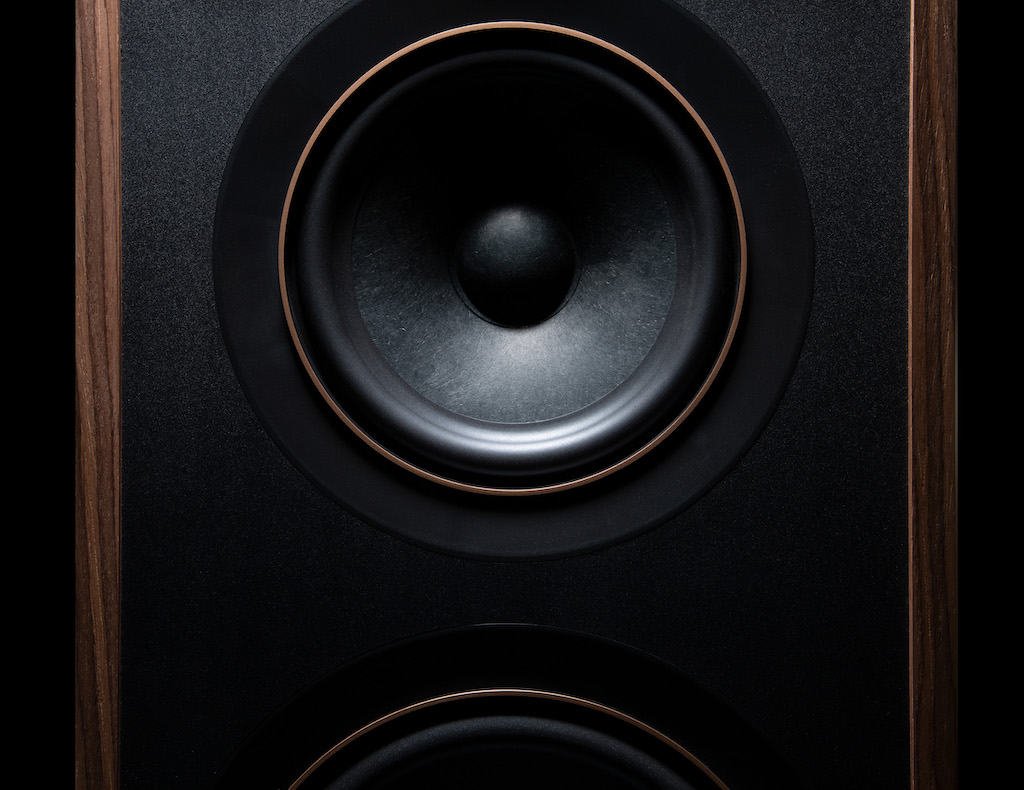 The paper cone woofer, with aluminium basket and filleted rubber surround, is 6.5 inches and that lower 8″ paper cone woofer you’ll see is actually a passive radiator – basically a woofer without its motor. Some speaker designers implement a passive radiator design as it is said this can behave in a more linear manner than the more traditional bass port. Using the sound pressure created inside the cabinet by the active woofers, a passive radiator can reproduce a nice clean bass response by working complimentarily to the main driver.
The paper cone woofer, with aluminium basket and filleted rubber surround, is 6.5 inches and that lower 8″ paper cone woofer you’ll see is actually a passive radiator – basically a woofer without its motor. Some speaker designers implement a passive radiator design as it is said this can behave in a more linear manner than the more traditional bass port. Using the sound pressure created inside the cabinet by the active woofers, a passive radiator can reproduce a nice clean bass response by working complimentarily to the main driver.
The cabinets are heavily braced inside and all edges and joints are mitred, all for the best possible fit and finish and of course to reduce cabinet vibrations. I heard Paul Barton say in a recent interview that the Passif 50s are tuned to be used with the magnetically attached grills left in place as this creates a nice seal to further reduce diffraction. Usually, the first thing I do with a new pair of speakers is remove the grills, but the 50s looked lovely with the woven covers in place and there was certainly no determinable improvement in sound quality with them off.
Each speaker features high-quality gold-plated dual 5-way binding posts for connecting to an amplifier in either single or bi-wired fashion. The Passif 50s’ nominal impedance is stated as 6 Ohms (minimum 4 Ohms) with a sensitivity of 89dB and frequency response of 50 – 20000 kHz. The recommended amplification power is 30 – 200 watts.
The Passif 50s are fairly light – weighing around 22kg each – and are easy to remove from their boxes. The little black stands, which are included as standard, are constructed from wood and need to be assembled. Some people might say these don’t match the speakers in build quality and aesthetics, but they serve their purpose perfectly well. Besides, once the speakers were in place I kind of forgot about the stands altogether.
As with any pair of speakers, I took my time to optimally position the Passif 50s in my smallish (3m wide x 4m long) listening room. Over the course of a few days, I made incremental adjustments until I was satisfied they were in the best possible spot. I can’t emphasise this enough – speaker positioning is crucial.
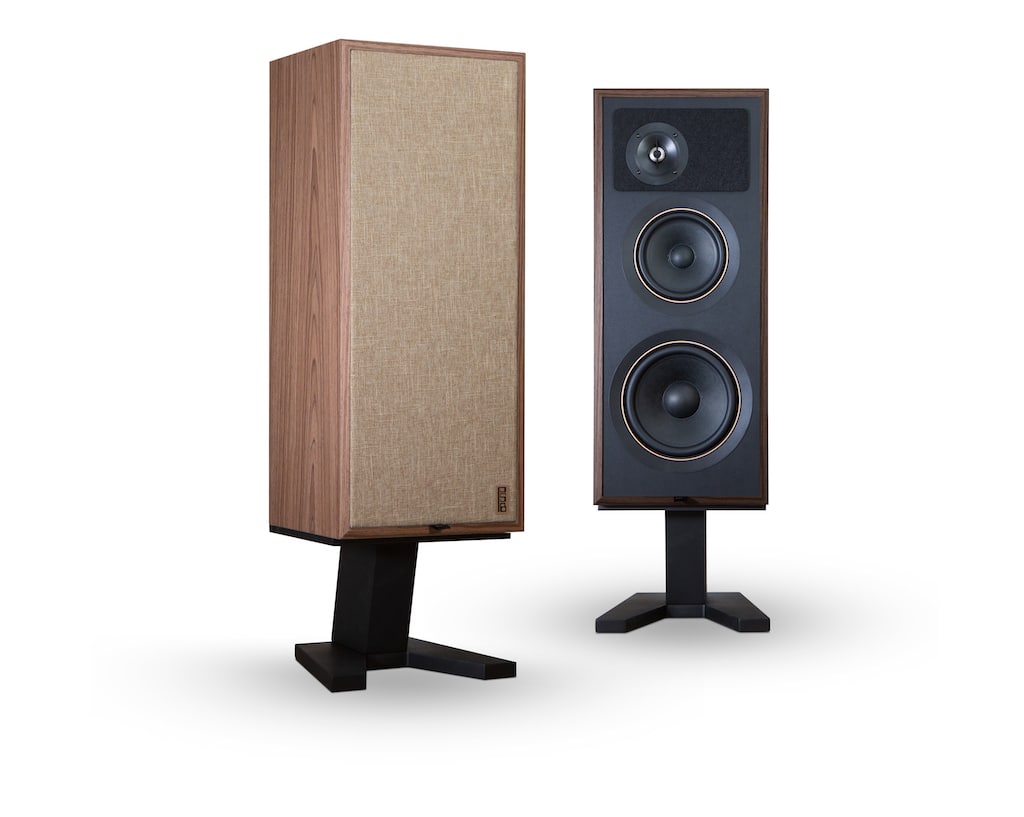 For amplification, I used my Italian Unison Research integrated which puts out around 180 watts per channel into 6 Ohms. Sources were The Wand 14/4 Turntable with 12 inch The Wand tonearm, EMT TSD-15n MC cartridge, The Wand EQ phonostage and EV battery/power supply, Electrocompaniet ECD 2 DAC, Technics SL-G700M2 Network CD Player (see review) and a SPEC Real-Sound USB DAC (in for review). For making speaker comparisons I used my Reference 3A (another Canadian) and Bowers & Wilkins 704 floorstanders.
For amplification, I used my Italian Unison Research integrated which puts out around 180 watts per channel into 6 Ohms. Sources were The Wand 14/4 Turntable with 12 inch The Wand tonearm, EMT TSD-15n MC cartridge, The Wand EQ phonostage and EV battery/power supply, Electrocompaniet ECD 2 DAC, Technics SL-G700M2 Network CD Player (see review) and a SPEC Real-Sound USB DAC (in for review). For making speaker comparisons I used my Reference 3A (another Canadian) and Bowers & Wilkins 704 floorstanders.
As advised by New Zealand PSB importer Connected Media, I let the speakers run in for a good while to loosen things up a bit before doing any critical listening.
These are a sophisticated and modern sounding speaker, not at all warm and flabby as their heritage may unfairly suggest. They are nothing like some old pair of speakers you might pick up in a junk shop on a whim because they look “so seventies, man”. They manage to draw the listener in with an addictively vivid and meaty midrange, excellent timbral capabilities and an impressive stereo image which is both wide and deep. Bass is punchy with rich tones, if not particularly deep and the treble is clear, crisp and explicit.
When I spun ‘War Pigs’ from Black Sabbath’s Paranoid (1970, Vertigo; Rhino Reissue), I found the upper extremes of Ozzie’s vocal and some of the higher electric guitar notes just a little too piercing for my ears. This track can go to the extreme through any speaker, but the Passif 50s tipped things just over the edge for me. I am a little sensitive to higher treble which could partly account for this – the B&W 704s give me similar trouble in this area. However, the nimble drumming was displayed with exciting speed and the crisply detailed timbre of the skins and cymbals particularly grabbed me. The absolute room-exciting power and slam provided by my Ref3As and 704s wasn’t quite there, but further listening, through a varied selection of tracks and genres, revealed plenty of admirable traits.
The Passif 50s can be quite revealing in that they don’t let an album off lightly if it isn’t the best recording. Odetta’s fantastic and rather underrated album Odetta Sings (1970, Polydor) is superbly recorded on Side 1, but inexplicably Side 2 doesn’t sound as good to me – a bit compressed and strained. It scrapes through with some speakers but the Passif 50s were another story. Side 1 was brilliant – clear, expansive, dynamic, expressive and near-to-lifelike with superb timbres and textures. Flipping the record over and the sound was dull in comparison apart from the treble which was, for whatever reason, now rather bright. While standout track ‘Hit Or Miss’ (going back to Side 1) had a slight loss of bottom end when compared to the two other speakers, the bassline was tuneful and nicely textured. The snare hits took my breath away – short, sharp and powerful strikes that shot out into the room like electricity – you really have to hear it. Odetta’s voice was the dominant factor, beautifully isolated and clear from the mix, a little toppy but tolerable and totally exhilarating.
Spinning Larry Young’s Unity (1966, Blue Note), I was treated to a full-bodied, airy sound with great stereo imaging. There was a good sense of three-dimensional space in and around the musicians, lending to the illusion that they were, dare I say it, “right there in front of me”. Again, it was the timbre and textures of instruments that impressed most, from the bubbly, jaunty organ with its rich, organic basslines (that’s Young playing bass with his feet using the organ’s pedals) to the energetic and exciting drum solos. Sax and trumpet could get a bit strident, mainly on the track ‘If’, but were colourful and projected clear from the speakers. I would say the bassline is definitely more prominent through other speakers (this was easily confirmed by swapping my Ref3As back in) but it had decent tonal character through the 50s.
https://www.youtube.com/watch?v=kJTo6jp5jJo&list=PL0q2VleZJVElsnXFRGNhOVz-J_0XnZKCt
Working my way through a bunch of electronic music from my Tidal/Roon collection, it soon became clear the Passif 50s are really adept at reproducing this genre. No, they don’t go low enough to trouble the neighbours or startle the cat, but they certainly proved punchy enough to satisfy my EDM cravings. The treble was crisp, clean and super detailed, projecting sounds out to the four corners of my room and anywhere in between. This was unmistakably the case on the track ‘Diafan’ from the Diafan EP (2021, Ada Kaleh Romania) by electronic artist Ada Kaleh, where I perceived sounds flittering away on either side of my head. The synthesised kick drum did have reasonably good thump, though I could hear precisely where it came up short – the point where a sub might be needed to fully realise those lowest notes. But this was more than made up for by the lovely smooth midrange and projected sounds. And the Passif 50s didn’t mess around rhythmically either, really showing off the compelling speed and energy of the music.
Yosi Horikawa’s ‘Bubbles’ from the EP Wandering (2012, First World Records) may be something of a clichéd track to use, perhaps more so in the headphone world, but it really is spectacular. There’s a beat, accompanied by a somewhat melancholic melody but the main star is an array of ping pong balls, bouncing on hard surfaces, right across the soundstage and leaping out of the speakers. A seemingly weightier type of ball bounces heavily in and out of the bassline and a stream of smaller hard balls – sounding to me like beads – snake in and around the entire field of sound. You can follow them with your eyes. It was quite stunning through the Passif 50s which, as well as showing off their holographic imaging capabilities, captured the textural contrasts of the balls so wonderfully. Again I marvelled at how clean and clear everything sounded, not to mention the richly structured sonic picture before me. My Reference 3As are arguably better at presenting images holographically but the Passif 50s really wowed me with convincing timbres and subtly revealed textures.
At times there could be an intimacy which I couldn’t help likening to listening with headphones – particularly something like Sennheiser’s HD600. Listening to Bill Callahan’s Gold Record (2020, Drag City), I had the uncanny sense that he was singing directly to me (yes, technically he was) right there in my head almost – much like the aforementioned Sennheisers tend to do. His acoustic guitar sounded natural and present, the timbre of the strings and the guitar body were nothing short of stunning. The Reference 3As can sound a little sparse in comparison, perhaps trying to recreate a larger space whereas the Passif 50s could put the performer right there with you when a piece of music called for it.
Playing Sabbath and tracks from other harder rock-type artists, I realised that despite their dynamic abilities the Passif 50s could on occasion be a little bit bashful, not quite having the raw energy to really rock out. Given, however, that these days I tend only to listen to that style of music occasionally (more and more occasionally as I get older and grumpier), I didn’t consider it too much of an issue. But it is something to consider if you’re a metalhead or you like to rock out regularly.
Another thing I noticed was that I didn’t need to be always sitting in the sweet spot to fully appreciate the speakers. If I was sitting in a different seat, or perhaps felt tired and lay down on the listening couch, or even sitting cross-legged on the floor listening to the Grateful Dead (like a goddamn 1970s hippie) all the qualities of the Passif 50s could still be enjoyed. This is great if you like to share the listening experience with others without compromising the effect in relation to where everyone is seated.
The Passif 50s are an incredible-sounding speaker. They may not have the sheer scale and drive of, say, a comparatively huge pair of Perlistens, but if you value timbre and rhythmic energy these may be for you. Though arguably not especially hefty in the bass department, they are punchy and engaging nonetheless. Transparent, superb in their portrayal of timbre and dynamic contrast, they are just downright fun and enjoyable. It doesn’t hurt that they are very aesthetically pleasing and unobtrusive and I don’t believe you have to be into the “retro theme” to fully appreciate them aesthetically. Yes, they’re expensive, but I think when considering price versus performance (and aesthetics), these are a very reasonable deal.
You may enjoy their explicitly crisp treble, though I would recommend being cautious if you feel your system is already a bit on the bright side, or if you are treble-sensitive like me. And likewise, if you’re a bass-head you might want to consider adding a sub. Apart from that, I suggest you go out and give them a listen as soon as possible.

